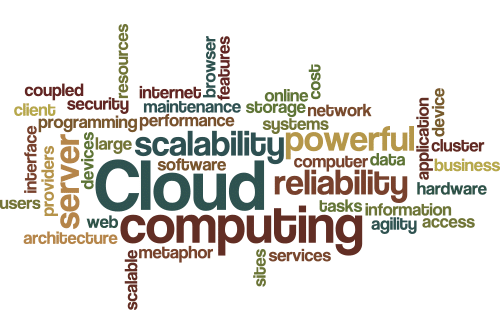While the future of cloud computing is certainly bright, the understanding of cloud computing terminology seems to be, well, cloudy.
We’ve collected the most misunderstood cloud computing terms in hopes make the process simple and clear. Print this out and keep it on your desk, because over the coming months and years, you’ll be hearing these cloud terms. A LOT.
Public cloud – large-scale, shared-space implementation of a software system. This user interface often resembles a website and is very commonly used through a computer’s browser. The most popular enterprise public cloud providers are Amazon (AWS) and Microsoft (Azure). A public cloud can drive cost efficiencies.
Private cloud – an IT infrastructure solely dedicated to one organization, designed to accommodate their unique needs. Since no data or resources are shared, private clouds can offer some additional security, although recent advancements in public cloud security measures, this advantage isn’t as pronounced as it once was.
Hybrid cloud – a mix of two cloud service-types built into a single infrastructure (like public and private clouds working in concert), most often working with one provider to integrate both clouds into a single platform.
Multi-cloud – multiple different services, platforms and applications in an organization’s cloud architecture. Multi-cloud is most often provided by multiple service providers, which differentiates it from the hybrid model.
Virtualization – a virtual version of a server, storage device or hardware platform. Virtualization enables businesses to reduce IT costs while increasing efficiency, productivity and flexibility.
Tiered storage – using multiple types of storage options to maximize performance, availability and recovery requirements. Tiered storage is most often configured to reduce the ever-increasing storage costs, while balancing availability requirements.
Latency – the time delay between when a data request is made and when the data is delivered.
Uptime – the amount of time that a cloud service is accessible to end users.
Service Level Agreement (SLA) – a contract between a cloud service provider and your organization that defines the level of service and service guarantees promised by the service provider.
Redundancy – extra cloud resources that are not necessary to a functioning environment, but exist in case of failure in the primary resources to maximize uptime and availability.
Telecom – the transmission of data through wires, most commonly the internet. Telecom determines system performance, which can make or break the success of your cloud initiative.
Cybersecurity – technologies, processes and practices designed to protect networks, computers, programs and data from cyberattack, damage or unauthorized access by online hackers or scams.
Software-as-a-Service (SaaS) – software delivered and supported through a browser environment.
IT-as-a-Service (ITaaS) – an end-to- end IT solution, provisioned with the exact hardware, software and support required to run the practice. ITaaS is similar to cloud computing but offers a wider breadth of coverage across all areas of IT.
Desktop-as-a-Service (DaaS) – remote desktop delivery that gives your users secure access to their files, applications and environments on any device at any location.
Right-Sizing – designing an IT environment that fits the exact needs of your organization without being over- or under-provisioned to maximize efficiency of your IT spend.
Scalability – the ability to quickly and efficiently procure more or less resources, depending on your business’s needs.
Cloud Service Provider (CSP) – a vendor that provides cloud management services to your organization. Look for a true partner (versus simply a commoditized vendor or provider) that will help you be more productive, more profitable and enable your growth.
Cloud sprawl – when an organization has multiple solutions being hosted by multiple cloud partners. For instance, when an EHR is hosted by the software provider, the lab system is hosted in a different cloud, email is hosted by Microsoft, etc. Cloud sprawl often comes with the burden of managing multiple vendors and feeling disjointed service.
We hope this glossary helps clear the air, but if you still have questions about the cloud, how your organization can benefit from the cloud or which cloud environment is right for you, let us help.
